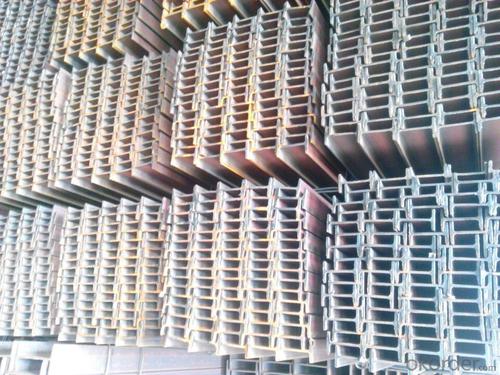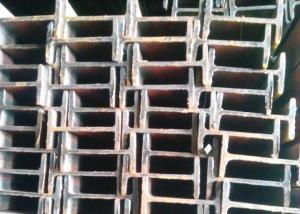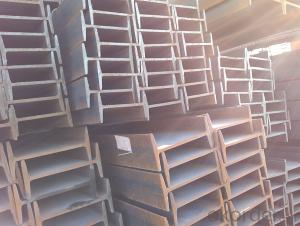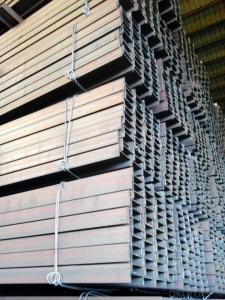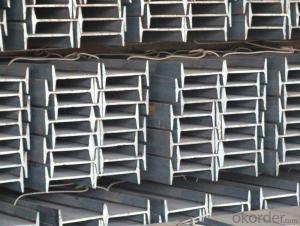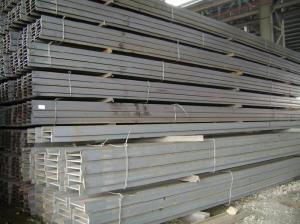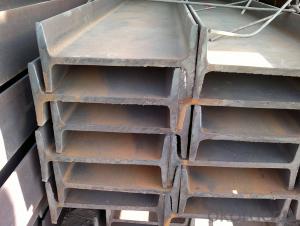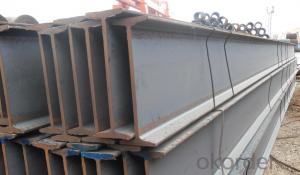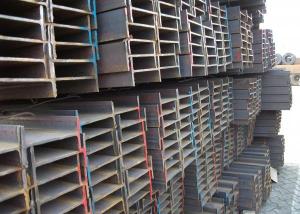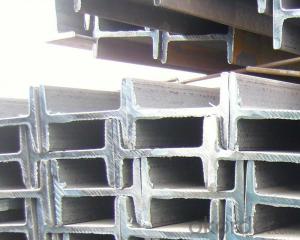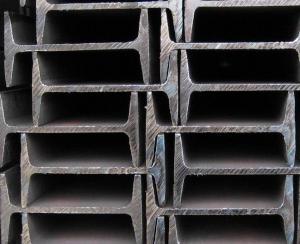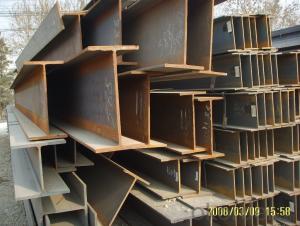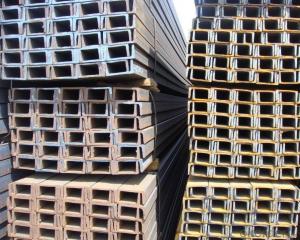EN Standard Hot Rolled Steel I Beams IPE/IPEAA
- Loading Port:
- Tianjin
- Payment Terms:
- TT OR LC
- Min Order Qty:
- 25 m.t.
- Supply Capability:
- 200000 m.t./month
OKorder Service Pledge
OKorder Financial Service
You Might Also Like
Specifications of EN Standard Hot Rolled Steel I Beams IPE/IPEAA
1. Product name: IPE/IPEAA Beam Steel
2. Standard: EN10025, GB Standard, ASTM, JIS etc.
3. Grade: Q235B, A36, S235JR, Q345, SS400 or other equivalent.
4. Length: 5.8M, 6M, 9M, 10M, 12M or as your requirements
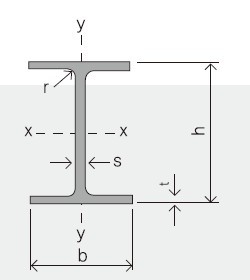
Section | Standard Sectional Dimensions(mm) | ||||
h | b | s | t | Mass Kg/m | |
IPE80 | 80 | 46 | 3.80 | 5.20 | 6.00 |
IPE100 | 100 | 55 | 4.10 | 5.70 | 8.10 |
IPE120 | 120 | 64 | 4.80 | 6.30 | 10.40 |
IPE140 | 140 | 73 | 4.70 | 6.90 | 12.90 |
IPE160 | 160 | 82 | 5.00 | 7.40 | 15.80 |
IPE180 | 180 | 91 | 5.30 | 8.00 | 18.80 |
IPE200 | 200 | 100 | 5.60 | 8.50 | 22.40 |
IPE220 | 220 | 110 | 5.90 | 9.20 | 26.20 |
IPE240 | 240 | 120 | 6.20 | 9.80 | 30.70 |
IPE270 | 270 | 135 | 6.60 | 10.20 | 36.10 |
IPEAA80 | 80 | 46 | 3.20 | 4.20 | 4.95 |
IPEAA100 | 100 | 55 | 3.60 | 4.50 | 6.72 |
IPEAA120 | 120 | 64 | 3.80 | 4.80 | 8.36 |
IPEAA140 | 140 | 73 | 3.80 | 5.20 | 10.05 |
IPEAA160 | 160 | 82 | 4.00 | 5.60 | 12.31 |
IPEAA180 | 180 | 91 | 4.30 | 6.50 | 15.40 |
IPEAA200 | 200 | 100 | 4.50 | 6.70 | 17.95 |
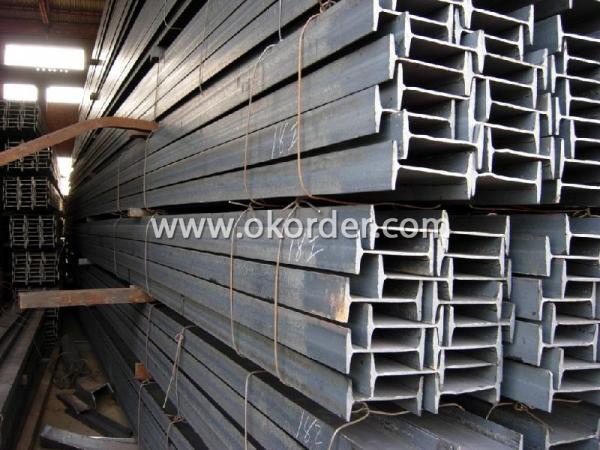
Applications of EN Standard Hot Rolled Steel I Beams IPE/IPEAA
IPE/IPEAA Beam Steel are widely used in various construction structures, bridges, autos, brackets, mechanisms and so on.
Packing & Delivery Terms of IPE/IPEAA Beam Steel
1. Package: All the IPE/IPEAA Beam Steel will be tired by wire rod in bundles
2. Bundle weight: not more than 3.5MT for bulk vessel; less than 3 MT for container load
3. Marks:
Color marking: There will be color marking on both end of the bundle for the cargo delivered by bulk vessel. That makes it easily to distinguish at the destination port.
Tag mark: there will be tag mark tied up on the bundles. The information usually including supplier logo and name, product name, made in China, shipping marks and other information request by the customer.
If loading by container the marking is not needed, but we will prepare it as customer request.
4. Shipment: In containers or in bulk cargo
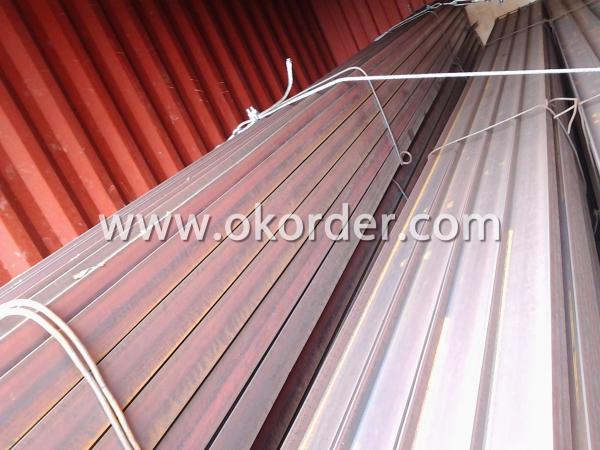
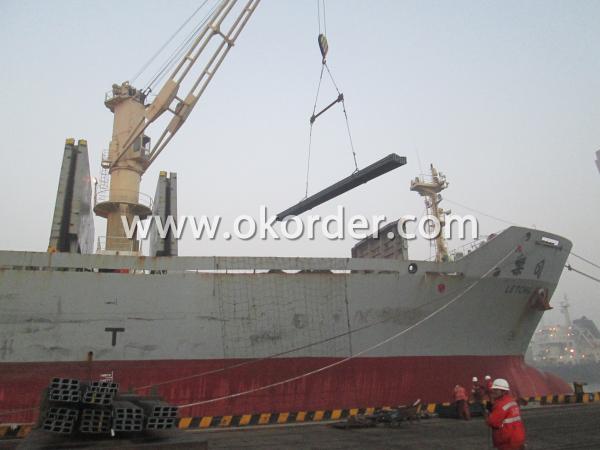
5. Delivery time: All the IPE/IPEAA Beam Steel will be at the port of the shipment within 45 days after receiving the L/C at sight ot the advance pyment.
6. Payment: L/C at sight; 30% advance payment before production, 70% before shipment by T/T, etc.
Production flow of EN Standard Hot Rolled Steel I Beams IPE/IPEAA
Material prepare (billet) —heat up—rough rolling—precision rolling—cooling—packing—storage and transportation
- Q: How do steel I-beams perform in seismic regions?
- Steel I-beams are widely known for their strength and durability, making them a popular option for construction in seismic areas. The performance of steel I-beams in seismic regions is generally outstanding, as they possess several qualities that make them suitable for withstanding earthquake forces. To begin with, steel I-beams have a high strength-to-weight ratio, allowing them to support heavy loads without being excessively heavy themselves. This is crucial in seismic regions, where buildings must withstand lateral forces generated during earthquakes. The lightweight nature of steel I-beams enables flexible and efficient structural systems that can better absorb and dissipate seismic energy. Moreover, steel is renowned for its ductility, meaning it can undergo significant deformations without losing its capacity to carry loads. In seismic areas, buildings must absorb and dissipate the energy produced by ground shaking. Steel I-beams possess this ductility, allowing them to bend and yield under seismic forces, effectively dissipating the energy and avoiding catastrophic failures. Additionally, steel I-beams can be designed with excellent connection details, ensuring effective force transfer between beams and columns. This is particularly important in seismic regions, where the connections between structural elements must be strong enough to resist significant lateral forces during earthquakes. Furthermore, steel exhibits predictable and consistent material behavior, enabling accurate analysis and design of structures in seismic areas. Engineers can employ advanced computer modeling and simulation techniques to evaluate the performance of steel I-beams under seismic loads, ensuring their ability to withstand and safely dissipate the forces generated during earthquakes. In conclusion, steel I-beams perform exceptionally well in seismic areas due to their high strength-to-weight ratio, ductility, excellent connection details, and predictable material behavior. These qualities make steel I-beams a reliable choice for constructing earthquake-resistant buildings. However, it is important to note that proper design, detailing, and construction techniques are crucial to ensure optimal performance of steel I-beams in seismic regions.
- Q: How do I calculate the difference between rail steel and angle steel, channel steel and I-beam?
- Rail steel is of high strength low alloy steel, it also has a special performance requirements, is a small thermal expansion coefficient, which is now the high-speed driving conditions, in order to reduce the collision between the wheel and rail wear and rail length ratio
- Q: Can steel I-beams be used in sports stadium construction?
- Yes, steel I-beams can be used in sports stadium construction. They are commonly used due to their strength, durability, and versatility, offering structural support for large spans and heavy loads required in stadium designs. I-beams are often utilized in the construction of stadium roofs, seating areas, and other structural components.
- Q: Can steel I-beams be used in power plants?
- Yes, steel I-beams can be used in power plants. Steel I-beams are commonly used in power plants for various applications, such as supporting heavy machinery, providing structural support for buildings and equipment, and creating strong and durable frameworks for power plant structures. The high strength and load-bearing capacity of steel I-beams make them ideal for withstanding the heavy loads and harsh conditions typically found in power plants. Additionally, steel I-beams are versatile and can be customized to meet specific design requirements, making them a popular choice in the construction and maintenance of power plants.
- Q: What are the different types of steel I-beam connections for staircases?
- Staircases commonly use different types of steel I-beam connections to ensure stability and strength. Let's explore some of these connection options: 1. The most frequently used connection in steel staircases is the welded connection. This involves welding the I-beam to the stringers or other support members, creating a strong and durable connection that guarantees stability. 2. Another option is the bolted connection, where high-strength bolts are used to attach the I-beam to the stringers or support members. Bolted connections offer convenience as they allow for easy disassembly and reassembly if needed. However, they may not be as robust as welded connections. 3. A cleat connection involves bolting a steel plate, known as a cleat, underneath the I-beam and connecting it to the stringers or support members. This type of connection adds extra support and stability to the staircase. 4. Plate connections utilize steel plates to connect the I-beam to the stringers or support members. These plates are typically welded or bolted to both the I-beam and the support members, ensuring a secure connection. 5. In certain staircases, the I-beam may require connection to a vertical column for additional support. This connection is achieved through welding or bolting, depending on the specific design requirements. It's important to consider various factors, such as load-bearing capacity, design requirements, and construction methods, when selecting the appropriate steel I-beam connection for a staircase. Consulting with a structural engineer or professional staircase designer is recommended to ensure the chosen connection type meets the specific needs of the project.
- Q: Can steel I-beams be used for overhead crane support?
- Indeed, overhead crane support can be achieved by employing steel I-beams. These I-beams are extensively utilized in construction and industrial settings owing to their impressive strength and ability to bear heavy loads. They are perfectly suited for accommodating substantial weights while offering the essential stability and structural integrity essential for overhead crane systems. Tailoring the precise size and configuration of the I-beams would naturally be contingent upon the load capacity and span specifications of the overhead crane. Furthermore, it is crucial to guarantee the proper installation and support of the I-beams in order to withstand the dynamic loads and forces exerted by the crane.
- Q: How do Steel I-Beams perform in terms of fire resistance?
- Steel I-beams perform well in terms of fire resistance. Due to their composition and design, they have a high melting point and are less likely to deform or collapse under intense heat. However, they can still lose their strength over time when exposed to prolonged high temperatures. To enhance their fire resistance, I-beams can be coated with fire-resistant materials or insulated to delay heat transfer. Overall, while steel I-beams are not completely fireproof, they offer a reliable level of fire resistance in structural applications.
- Q: Can steel I-beams be used in sports stadiums?
- Yes, steel I-beams are commonly used in sports stadiums as they provide structural support and strength necessary for large-scale construction projects.
- Q: What is the difference between 18# GB and GB?
- 18# GB GB, the weight of each meter is 24.1, and then multiplied by the number of meters, multiplied by the tons sold to you on the priceBecause the non standard is not up to 24.1 so you can ask your supplier to the actual weigh
- Q: Can steel I-beams be used for hurricane-resistant structures?
- Yes, steel I-beams can be used for hurricane-resistant structures. Steel has high strength and durability, making it a suitable material for withstanding hurricane forces. I-beams, in particular, provide excellent load-bearing capabilities and can effectively resist the strong winds and flying debris typically associated with hurricanes. Additionally, steel structures can be designed to meet specific building codes and standards for hurricane resistance, further ensuring their ability to withstand severe weather conditions.
Send your message to us
EN Standard Hot Rolled Steel I Beams IPE/IPEAA
- Loading Port:
- Tianjin
- Payment Terms:
- TT OR LC
- Min Order Qty:
- 25 m.t.
- Supply Capability:
- 200000 m.t./month
OKorder Service Pledge
OKorder Financial Service
Similar products
Hot products
Hot Searches
Related keywords





